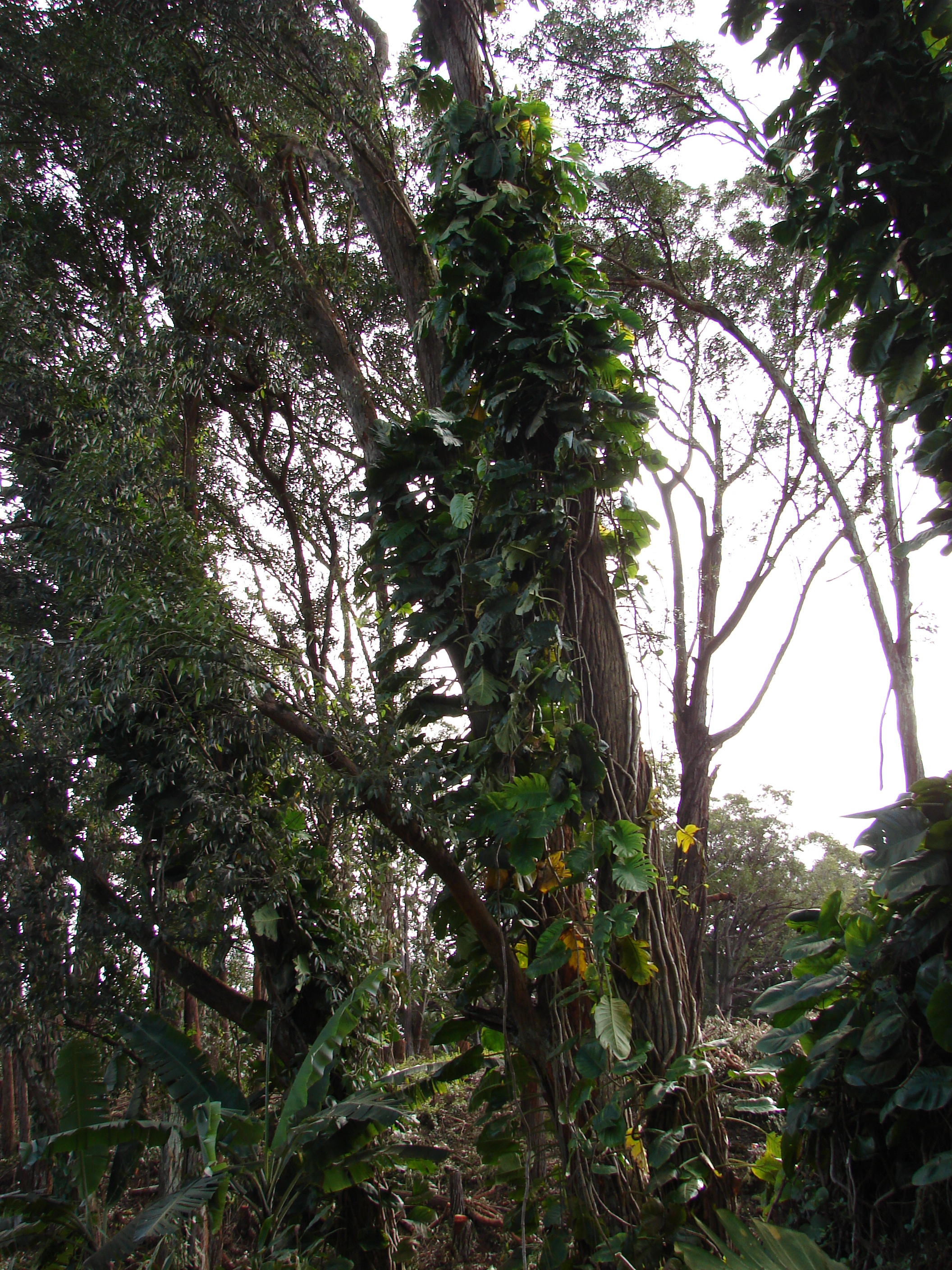Photo by Forest and Kim Starr licensed under CC BY 2.0
Pothos might be one of the most widely cultivated plants in modern history. These vining aroids are so common that I don't think I can name a single person in my life that hasn't had one in their house at some point or another. Renowned for their hardy disposition and ability to handle extremely low light conditions, they have become famous the world over. They are so common that it is all too easy to forget that they have a wild origin. What's more, few of us ever get to see a mature specimen. The plants living in our homes and offices are mere juveniles, struggling to hang on as they search for a canopy that isn't there.
Trying to find information on the progenitors of these ubiquitous houseplants can be a bit confusing. To do so, one must figure out which species they are talking about. Without a proper scientific name, it is nearly impossible to know which plant to refer to. Common names aside, pothos have also undergone a lot of taxonomic revisions since their introduction to the scientific community. Also, what was thought to be a single species is actually a couple.
Photo by Forest and Kim Starr licensed under CC BY 2.0
To start with, the plants you have growing in your home are no longer considered Pothos. The genus Pothos seemed to be a dumping ground for a lot of nondescript aroid vines throughout the last century. Many species were placed there until proper materials were thoroughly scrutinized. Today, what we know as a "Pothos" has been moved into the genus Epipremnum. This revision did not put all controversies to rest, however, as the morphological changes these plants go through as they age can make things quite tricky.
Photo by Tauʻolunga licensed under CC BY-SA 3.0
As I mentioned, the plants we keep in our homes are still in their juvenile form. Like all plants, these vines start out small. When they find a solid structure in a decent location, they make their bid for the canopy. Up in a tree in reach of life giving sunlight, these vines really hit their stride. They quickly grow their own version of a canopy that consists of massive leaves nearing 2 feet in length! This is when these plants begin to flower.
As is typical for the family, the inflorescence consists of a spadix covered by a leafy spathe. The spadix itself is covered in minute flowers and these are the key to properly identifying species. When pothos first made its way into the hands of botanists, all they had to go on were the small, juvenile leaves. This is why their taxonomy had been such a mess for so long. Materials obtained in 1880 were originally named Pothos aureus. It was then moved into the genus Scindapsus in 1908.
Controversy surrounding a proper generic placement continued throughout the 1900's. Then, in the early 1960's, an aroid expert was finally able to get their hands on an inflorescence. By 1964, it was established that these plants did indeed belong in the genus Epipremnum. Sadly, confusion did not end there. The plasticity in forms and colors these vines exhibit left many confusing a handful of species within the group. At various times since the late 1960's, E. aureum and E. pinnatum have been considered two forms of the same species as well as two distinct species. The latest evidence I am aware of is that these two vines are in fact distinct enough to warrant species status.
Photo by Mokkie licensed under CC BY-SA 3.0
The plant we most often encounter is E. aureum. Its long history of following humans wherever they go has led to it becoming an aggressive invader throughout many regions of the world. It is considered a noxious weed in places like Australia, Southeast Asia, India, Pakistan, and Hawai'i (just to name a few). It does so well in these places that it has been a little difficult to figure out where these plants originated. Thanks to some solid detective work, E. aureum is now believed to be native to Mo'orea Island off the west coast of French Polynesia.
Epipremnum pinnatum is similar until you see an adult plant. Photo by Mokkie licensed under CC BY-SA 3.0
It is unlikely that most folks have what it takes to grow this species to its full potential in their home. They are simply too large and require ample sunlight, nutrients, and humidity to hit their stride. Nonetheless there is something to be said for the familiarity we have with these plants. They have managed to enthrall us just enough to be a fixture in so many homes, offices, and shopping centers. It has also helped them conquer far more than the tiny Pacific island on which they evolved. Becoming an invasive species always seems to have a strong human element and this aroid is the perfect example.
Photo Credits: [1] [2] [3] [4]




